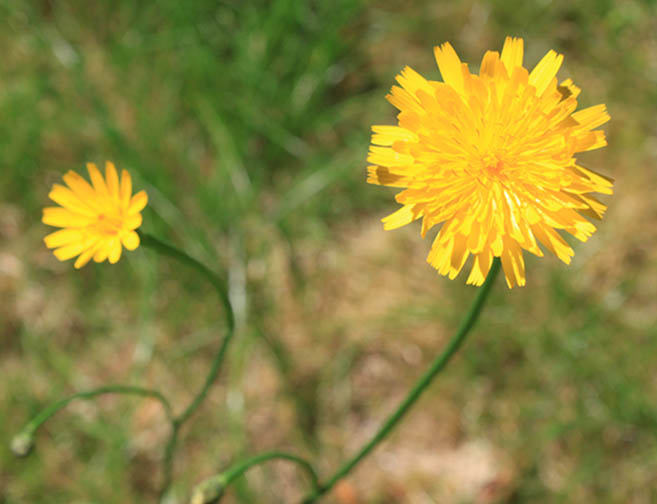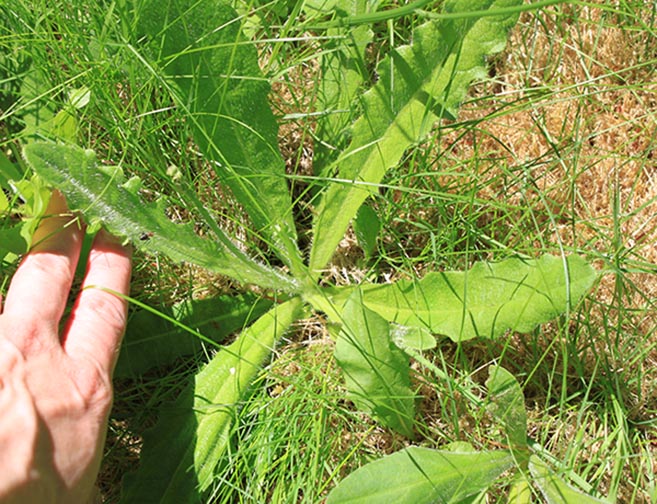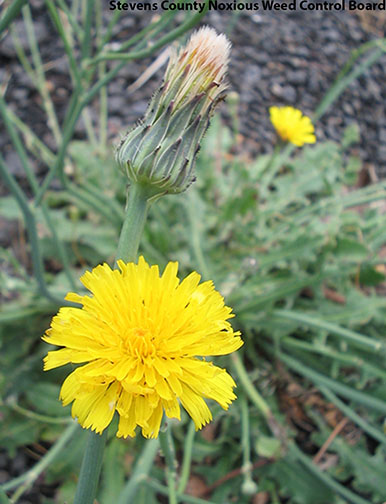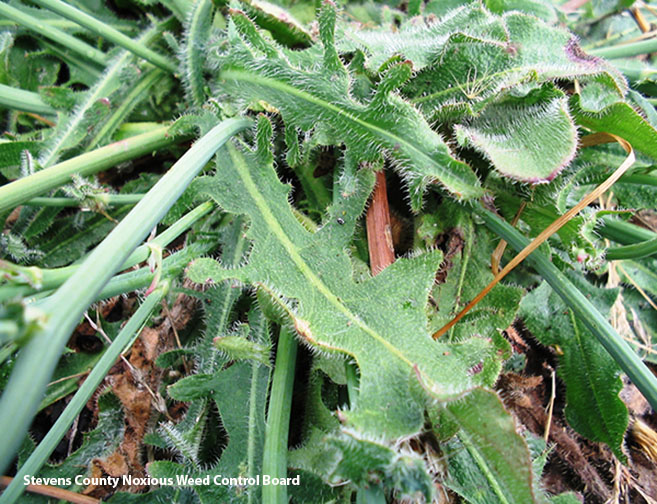Common catsear identification and control
Information about the noxious weed common catsear. Common catsear is also known by its scientific name, Hypochaeris radicata.
About this weed
Common catsear is a non-regulated Class C noxious weed. This means due to how widespread it is, property owners are not required to control this species on their property, though it is encouraged.
Common catsear is known as Hypochaeris radicata and it is in the aster family. It is also known as hairy cat’s ear, flatweed, false dandelion, and spotted catsear.

Why it’s a problem
Common catsear is an aggressive weed in lawns, pastures, and waste areas. It is toxic to livestock. Common catsear can produce as many as 6,000 seeds per rosette.
Plant description
Common catsear is originally from Europe. It grows in disturbed areas, lawns, roadsides, pastures, waste areas, gardens, and seed fields.
Common catsear is a perennial (plants that have a 2 or more years life cycle) with a growth pattern similar to a dandelion. It has a rosette (a circular cluster of leaves on ground level) and upright typically leafless stems and branches. It produces a milky juice when broken.
The flowers grow at the ends of stems. The yellow ray flowers are 1 to 1.5 inches in diameter.
The leaves are rough, hairy with lobed or wavey margins. Leaves are about 1 inch to almost 14 inches long and can grow up to 3 inches wide.
The stems are hollow and produce a milky white sap when broken or cut, as do the leaves.
Common catsear can reproduce by seed, crown, and root sections.





Be aware of look-alike plants
Common catsear is often mistaken for the common dandelion. Common dandelion has much more divided leaves and does not have hairs like common catsear.
When in doubt, take photos and report them on iNaturalist.
What to do if you find
Because common catsear is so widespread, property owners in King County are not required to control it. King County is not generally tracking infestations.
We can provide advice on how to control common catsear but there is generally no legal requirement to do so. The King County Noxious Weed Control Board encourages property owners to remove common catsear where possible, and to avoid introducing it to new landscapes.
Consult your local master gardener group or try the Garden Hotline for tips and tricks on managing garden weeds.
Control methods
We recommend using a combination of methods to control weeds. In areas with few weeds, it is important to act quickly before they become harder to control. Make a long-term plan as it often takes several years to get rid of most weeds. Start in the least infested areas first and then move into more heavily infested areas.
Mechanical control
Mowing is not recommended as regular mowing can double the number of flower stalks produced.
Cultural control
Rotating legumes with row or cereal crops is the most practical way of managing common catsear in legume fields.
Manual control
Hand pulling and digging can be very effective. While common catsear has a deep taproot, it cannot resprout from root fragments when detached from the crown.
Chemical control
Stay safe when using herbicide:
- Always read the label before use.
- Wear a long-sleeved shirt, long pants, shoes, and eye protection.
- Follow state and local regulations.
Spot spray common catsear using a selective broadleaf herbicide containing 2,4-D. Common catsear should be sprayed before flower buds appear to ensure seed is not produced. Non-specific herbicides such as glyphosate are not recommended as they will kill surrounding plants and maintaining the vegetation will assist in weed control efforts by shading out any weed seeds in the soil, preventing growth.
For more information or a site-specific recommendation in King County, contact the noxious weed program. For information in other locations, contact your local weed board or extension office.
Disposal instructions
Common catsear can reproduce by seed, crown, and root sections. Dispose of them in the garbage and the rest may be composted.
Noxious Weed Disposal - Washington State Noxious Weed Control Board

 Translate
Translate